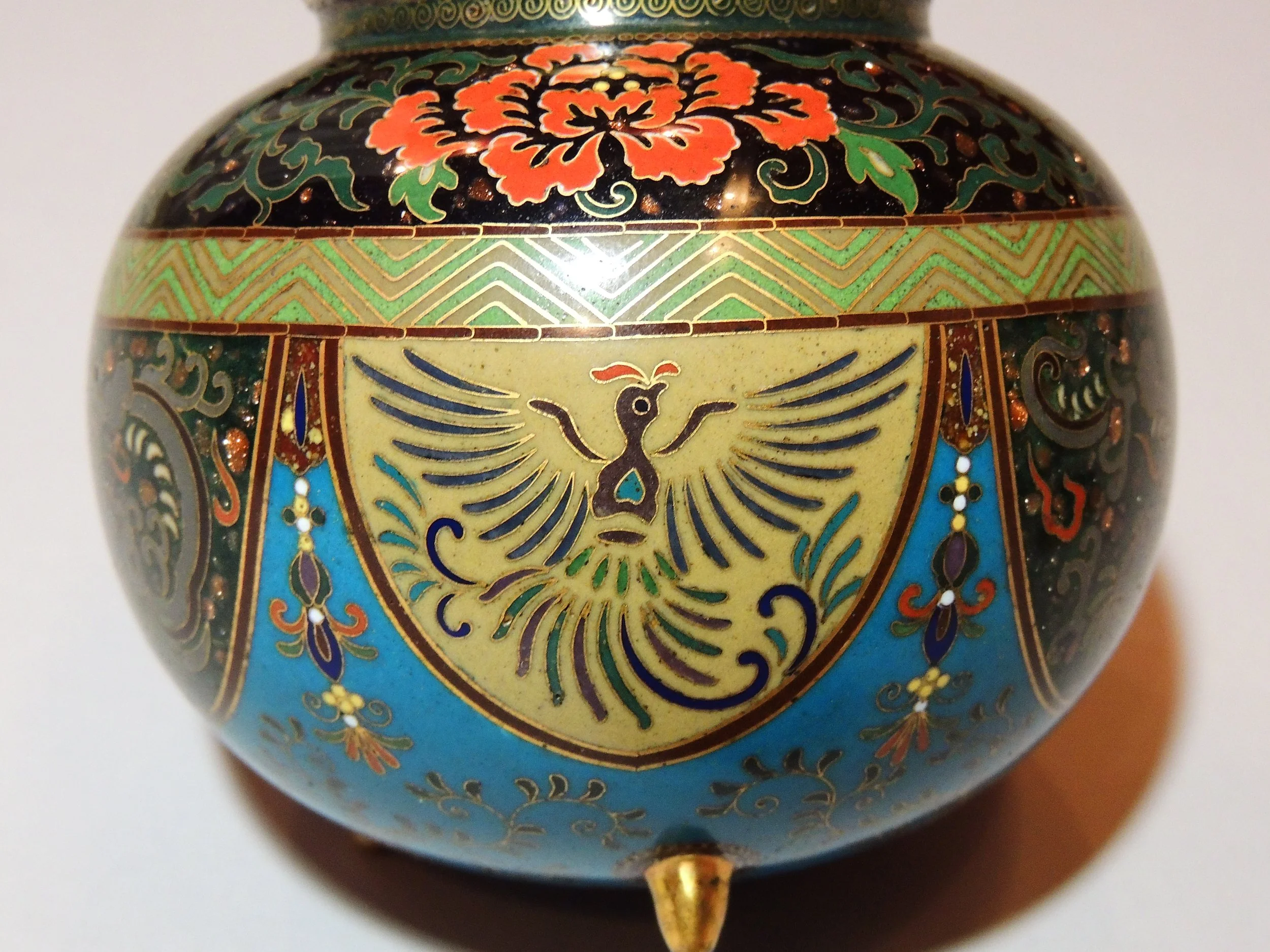Namikawa Yasuyuki
Meiji period, 19/20th century
1868-1912
Napkin Ring
A very fine napkin ring on a brass base with fine gilt silver wire and mottled green enamel. Depicting butterflies and flowers.
Although this napkin ring is unsigned it is almost certain that it is of the Namikawa Yasuyuki workshop. A perfectly matching unpolished napkin ring was found in the possession of the Namikawa Estate strongly attributing this to him.
Unsigned
Namikawa Yasuyuki
48mm x 48mm x 25mm










